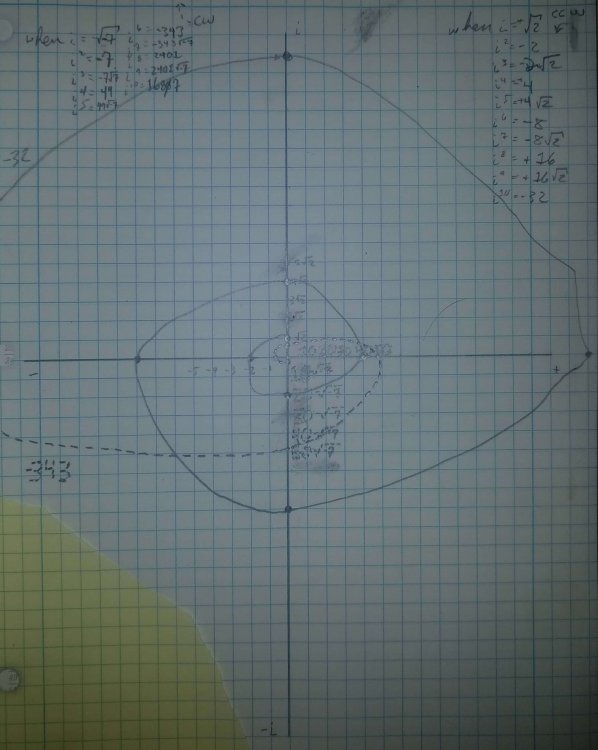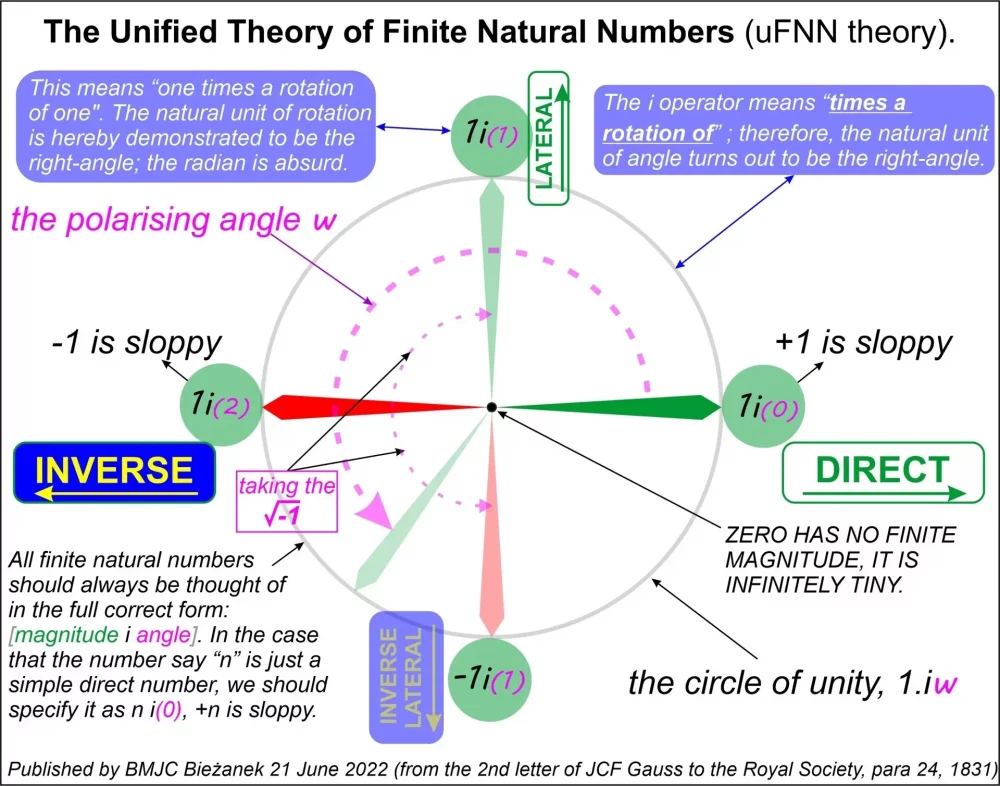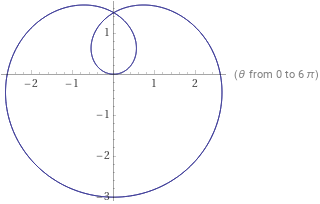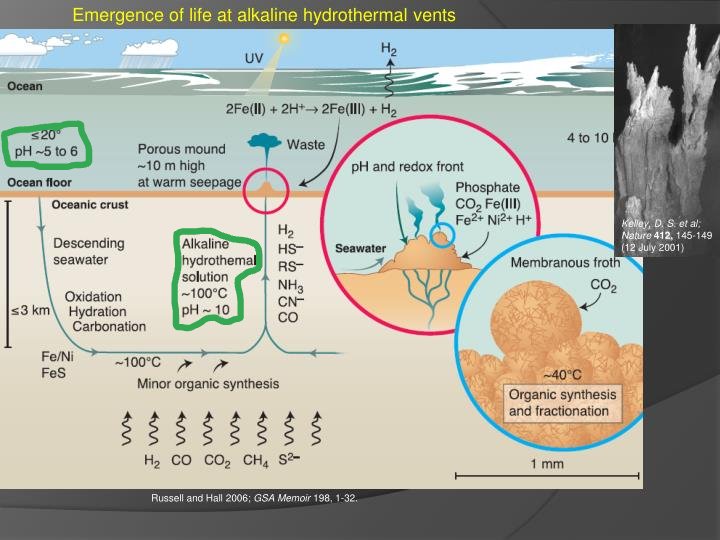-
Posts
286 -
Joined
-
Last visited
-
Days Won
1
Content Type
Profiles
Forums
Events
Everything posted by NTuft
-
DIPA or TIPA? Pubchem Monoisopropanolamine BP: ~159°C, Topological polar surface area: 46.2 Ų Pubchem Diisopropanolamine BP:249°C, Topological polar surface area: 52.5 Ų Pubchem Triisopropanolamine BP: 306°C, Topological polar surface area: 63.9 Ų The Specifier's Guide to Buying and Applying Isopropanolamines DOW, pg. 8 physical properties
-
Doesn't the 99.99% volume occupancy by the electron only follow from a dense nucleus of particles? From reading Inside the Proton, the 'Most Complicated Thing You Could Possibly Imagine', there are unknowns, but it seems hard to argue away the explanatory power of particles a la the Standard Model. I need to read "Matter as excitations of the field", as admittedly I don't understand the field views well enough, so know I don't discount your perspective out of hand. True, though the object still has an "objective" existence aside from it's functional conception. The field excitation view... From the linked write-up, there are problems resolving the proton's spin, too. It seems to be related to magnetic field interactions, and to my mind electronic spin and nuclear magnetic resonance look to be making use of a classical spinning.. Dirac's belt trick can be done with a belt. What the analogy of the tethered ends would be, I don't know. I doubt that it is classical, unless there's some physical dimensionality that is difficult to conceptualize, and I'm a bit stuck in classical and not sufficiently confused by the quantum picture as I haven't understood it.
-
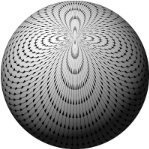
The Magic Capacitor: a short science fiction story.
NTuft replied to JacobNewton's topic in Speculations
Wikipedia ... "If in the first act you have hung a pistol on the wall, then in the following one it should be fired. Otherwise don't put it there."[15] -

The Magic Capacitor: a short science fiction story.
NTuft replied to JacobNewton's topic in Speculations
This makes Einstein's chalk into something like Chekhov's gun. -
@Lorentz Jr, How big is an electron? To address your second bullet I go to interpret scattering/splitting experiments. The hard, dense nucleus follows from one. Equating gives the classical electron radius, ~10-15m, which would be about the same size as the nucleus there. From the Zeeman effect I believe the electron has a magnetic dipole, and the Lamb shift indicates the exchange interaction of electromagnetic force in vacuum. Limiting e rotational speed below c in accounting for the magnetic moment indicates a lower limit on e radius of 10-12m(). Is that the value from which you make your 99.99% claim? Ostensibly it cannot be confined to space less than that because if it were smaller there'd be enough energy for e creatio ex vacuum: producing a positron-electron to annihilate and have a bonus e. The limit calculation is modelling the electron as a classical spinning object (with the constraint v<c), but the interpretation is from the exchange interaction. Experiments have put bounds on the electric and magnetic dipole moments: From my read this puts the electric dipole moment measurement at 1.1 × 10−29 e cm, and "a natural size scale, R<(ℏc)/E=2×10−20 m"? So the experimental results read to me as saying a size below the Compton wavelength is possible. Do you really think the size of the electron is the size of the electron wavefunction? Or isn't the wavefunction a description of the probability of finding the electron at a certain position? @Genady, It may be that you have a high momentum computer, or rather, that your computer's position is so well known that it's momentum is uncertain. However, I'm not sure that the same laws apply at different scales, and that seems to be the insoluble problem. Perhaps your computer's existence is not dependent on any uncertainty relation, or, there is no reason to be biased by creatio ex minima schemas and disregard macroscale classical experience. It may be a form of causal opacity from the interpretations, because I think it's fine to presume that the various scales were accounted for to work well; i.e. your computer ontologically exists. Or please explain why not.
-
Which one is it? Has to be --------, eh? This reminds me of a quote from iNow: is that your concern here, exchemist? Or why are you walking on eggshells -- wary because he/she/it mentioned "hurt or even be noticed by a human?" Maybe check post history if concerned? Good show here, thanks.
-
I don't know. I think you've got to catch them all, then try to compare and contrast. Which one did you choose that lead to that question and answer? It's called a matter wave, I think it's implied to be "... solid... of... kind...". I read your speculations thread. I don't know if you're on about point particles or (more likely) elementary particles, but it's a stretch to go from there to Genady's computer and I'll be a monkey's uncle if it's not a solid by then. I mean that's a marco-molecular structure, composite particles and on into actual chemicals. Thanks for the link here. Genady doesn't even believe his computer exists ontologically. I'm ontologically uncertain about ontology and I blame 1)Markus Hanke and 2)Loretnz Jr. +1 to TheVat who is on about David Bohm and particles over there. Interpretations of QM->Quantum physics->QFT and of course a treatment for time and gravity so from the end of Relativity: Having reached different conclusions about his computer and although I hold in reserve G.'s ability to speak facetiously and cryptically can it be inferred that we have different QM interpretations that led inexorably on to logically to this result or is it an illogical loosening on someone's part. I request speculation on this unverified claim: and clarification of if it is Smolin's Public Lecture: Time Reborn at PI, or what, that is referenced.
-
In quiet moments by yourself how well can you feel your heart? This sounds like overwriting by your mind. If there's a cold body of water you could immerse yourself in you may find it to be a modification for the computer.
-
Staggered geometric progressions or logarithmic spirals that are created on the Argand plane by expanding definition of imaginary numbers because of the exponentiations. Even numbered exponentiations generate real numbers and odd numbered generate imaginary since working with purely imaginary numbers, so points on the graph are mapped to the axes. Solid line and numbering for +i and -real axes for graphical description given at upper rt.-hand corner describing CCW rotation(from +i axis for positive prime); dashed line and numbering for -i and +real axes for representation described in upper lt.-hand corner describing CW rotation (from -i axis for negative prime). Note that increments for on imaginary axis go by multiples of and by +1's and -1's on the real axis, and for the increments are in 10's of and blocks of 10 on the real axis; as denoted by solid and dashed lines, respectively. Uncertain how to properly scale axes, but I do think there is a geometric progression because each time there is a squared exponentiation there is a multiplication here by 2 or 7, or by each raised power a multiplication by the sqaure root of those; also unknown if negative exponentiation should instead create a descreasing spiral or the symmetry (change in rotation direction?) around zero as described previously: confusion d/t complex numbers since negative exponents should mean how many times to divide by the number but on the complex plane exponentiation is creating rotation... Please criticize.
-

The embodiment of everything I have been banging on about since the 1960s
NTuft replied to studiot's topic in Climate Science
What do you mean? Are you pointing to how they're able to do so much with a small dam? Or are you saying the water flow past the dam is low? Resevoir looks topped off. Reading a while it occured to me to construct an inlet off from the ocean, allowing water to move inland and downhill to run a turbine and have it go to groundwater or form a small delta. Probably engineering contingencies I'm not taking into account. Please elaborate on what it is you're trying to continue to bang on about. -
Fine I'm sure most realize it but to be explicit, we've branched from QM to Quantum Field Theory(QFT) which most often does bring along Special Relativity. And the CHSH game, or the version with two referees judging timing, may be drawing a line between the classical and quantum versions of Bell's inequality: Most of the experiments seem to use measuring polarized light as a proxy for entangled electrons as Bell had intended. From reading Kracklauer, he seems to state that the only appropriate distinction regarding non-commutating measures in QM relates to the uncertainty principle. So one end of either momentum or position; joigus superbly explicates the math/physics formalism for locality. I don't think Relativity needs to come into the discussion regarding QM or QFT. It is brought out as a litmus test for trying to weigh an interpretation's plausibility but I don't think that's valid here. To point to the second postulate of S.R. is to sidestep the point of contention at issue here with regards to entanglement. So the idea of wave function collapse explained by the projection postulate as reality condensing to a certain possible superposition is the measurement problem in QM. I read your conjecture here to hinge on wave->particle duality taking a direction or shape as in going from a wave to a particle upon observation, is that what you're envisioning? Here, if momentum is zeroed to a finite precision, which is questionable, and the position is totally undetermined doesn' that equate to non-locality? I realize you later explain non-locality explicitly. I can't get back all the quotes I had, but @Mitcher seemed to be referring to Kaluza-Klein theory when he mentioned an oblique 5th-dimension in which apparent long distances are effectively local, so I think he was not in unacceptable territory but was meeting some speculation with some well-supported science: Will try to provide supporting evidence to assertions as should be required. Bully, I say. As swansont also mentioned aether not being necessary, I would agree, but only because the patch-work put together is now effectively an elastic dielectric medium for wave propagation and the vacuum energy may even be non-zero (ok, crank-case speculations here). This is on par with higher education, so thanks.
-
Bell's "Theorem": loopholes vs. conceptual flaws by A.F. Kracklauer So... conceptually sound, but holey quantification? @Eise, you asked me a pointed question, and although I think you put it there as low hanging fruit, I will answer it and say quantum tunneling. To send a signal into the past and try to achieve that beer, I say that the emitter is a symmetric gamma ray burst. Given a vacuum energy and pervasive fields I'll blithely pretend I have an effective aether, and a preferred frame, although I read a post of @MigL's where he tried for the beer and I'm sure he wants to take the aetherwind out of my sails. @hoolayour parallel waves sound like cosine/sine waves -- they'd be out of phase. For illustrative purposes, even though this is a scienceforum; there's been a 17-page shootout here between a group on a bandwagon and a lone @bangstrom on a horse. @Mitcher tried to help but @swansont killed him by saying he couldn't speculate (and we wouldn't want him speculating in here against our conceptually Holey but well quantified Law of Relativity). I told you Murray Gell-Man got mad and left the wagon train to go off and was camping somewhere and devising consistent histories around the campfire. A.F. Kracklauer is now up ahead at the pass through the gorge about to blow the dynamite and close the pass on all your arguments regarding even needing to give up locality or realism. This other paper in, "Open Physics", is by Louis Sica who's been on this topic a while: The ultimate loophole in Bell’s theorem: The inequality is identically satisfied by data sets composed of ±1′s assuming merely that they exist @joigus The Origin of Complex Amplitudes [PDF DOWNLOAD -- researchgate] There is logic in there of the type you use and I think you could critique it. I noticed studiot so maybe he can tell if this is worth a damn, too.
-
Well... this is a goofy website: https://www.gnqr.co.uk/quantum-time-home-phase-four that clearly needs vetting. However, what I was looking for was this, which is brought out as an image on the lower part of the page after navigation: I can't find secondary verification of the letter from Gauss, but here's another page that quotes the same section, and has a good write-up on the topic: The Reality of Imaginary Numbers by Brett Berry From the Quantum Relativity site, here is their display of the Argand plane from that same page, highlighting the facet of multiplications as rotations (and other stuff..): I think an example from the Medium article is illustrative. Given the equation y=x2+1 graphed on a Cartesian plot with two perpendicular integer axes, this quadratic equation does not cross the x-axis which would normally indicate where the solutions (x=0) are found. I think it's because the X-Y Cartesian plot of this form although seeming to graph a quadratic equation is somehow still linear. When the Argand plane uses the whole Real axis as the horizontal number line it then extends the imaginary numbers, up as "direct lateral" and down as "inverse lateral" from the direct and inverse numbers horizontally to create the necessary non-linear dimension to find the solutions to the quadratic equations. I'm probably wrong and in need of proof-reading so have at it. I also encourage enlistment to go spelunking about the gnqr website for discussion but now am off topic.
-
Hi @awakening, how are you? Is english your first language? There is little doubt you are in danger, but, to coin a phrase, "go stick your thumb in another pie". Find something to do: whether it's taking a long walk or starting some exercise, gathering and preparing some food, or going out to talk to strangers or meet with friends or family, or maybe some "ablution" or body care. What is it you think is the danger, specifically? Murder plot? As for your designs, you refer to (6) as motor. I look at it, and (6) looks like it must be stator, a vertical anchor (as in to the length x width of magnet) around which your rotary (5->7) motor is turning. I think you also need to account for point (6) to have a wire to conduct the electricity. Do you see this as an electric generator? You get into some complicated specifications. To start, I think you need to simplify and consider building a simple model as proof of concept. Or, can you explain: 1) How does the superconductive tube/metglas ball function as armature? Why are these specifications necessary? 2) Do you think a simplified version could prove feasibility study, specifically: what about the ball getting stuck? Do you think your complex specifications somehow evade the basic faults, or don't you suppose a simplified version needs to be done to show the basic mechanism can work? I think of it this way: what you propose is a form of perpetual motion machine, one that will generate energy from motion for an apparent net gain. I gather that you think the complex specifications are necessary for this, but a simplified version should be able to prove the mechanical feasibility of operation, and although perhaps providing a lower power output than your proposed "overunity" device, may need to be the first step. It will not be easy as you apparently need some precise machining and gearing, but I do not think anyone is going to pick up your project for engineering wholesale without smaller first steps to prove its worth. Good job trying to work on something that you think has potential. Perhaps think of it in terms of consciousness's wholistic designs: if your project is meant to come to fruition you'll likely get to live to make it happen and that very likely, in my opinion, means you'll have to fashion parts by hand and develop it yourself. Good luck! And please do address the two pointed questions.
-
I presume you're referring to the Argand plane? The Argand plane diagrams are graphing complex numbers out from the origin as vectors. We can graph vectors on our Cartesian x-y graph, too. However, the geometric interpretation of the real number line is already a construct of numbers as vectors to my mind: a number selected on the line has a magnitude, its value, and a direction, positive or negative away from 0. For the complex plane, look at this difference: To my mind, this is related to the idea that with complex numbers there is no concept of larger or smaller that can be compared to how we think of real numbers as being closer or further from 0. Imaginary is just a name, given by Descartes himself I believe. Gauss did not like it -- and thought they were on equal footing, to paraphrase his writing. +1 uncool on number sets +1 joigus on matrices
-
What I intend to convey from my interpretation was that one should comport oneself to surroundings or mores as necessary, more of a be sly advisement than an explicit rule or commandment. I think an undercurrent in the Church was always that they were developing under the Imperial power, and then once the church was ascendent it became a social power... Well both "Jesus" and "Paul"'s sayings are.. so meta.. I don't think this book is meant to be literal. I don't think Paul mentions Jesus. But I digress. If Jesus's instruction was not to even look at women in lust, then a fine pair of tanned bosoms exposed is.. well it's a fine thing. But control yourself. I will posit here in regards to nudism that most folks would agree that to hang dong in front of everyone willy-nilly may not be our best course. I need to do Bible study, and Song of Solomon is now on the list. I don't know why, but i have it on file that to kiss a woman's breasts was something about the Shekinah... Shaved?? nit-picky, I know but I found it from Strong's Concordance shad:breast Original Word: שַׁד Part of Speech: Noun Masculine Transliteration: shad Phonetic Spelling: (shad) Definition: (female) breast I don't know.. I get that the O.T. is supposed to be historical, but I doubt even the story with Bathsheba isn't allegorical. Or stories with Daniel. And I don't think Jesus's sayings like the one above about adultery are supposed to be hard-line literally applied as rules.. Like to dis-member yourself. I think what is at issue is how to read history. I don't know if we can conclude what things were like necessarily, we may just have to try to put ourselves into the place and time as an experiment.
-

"Disproving" Cantor's hypothesis -- it's trivial, anyway
NTuft replied to NTuft's topic in Speculations
I don't think we actually know that. It may be that the complex numbers have a lot more transcendentals than the reals, don't you suppose??? Ok, but to reinforce: the reals have cardinality in part defined by having all transcendentals you claimed, and the naturals have none. The results obtained from the function That we will force the natural numbers set to have to match each choice for base, against which all results from exponentiation could be counted; but we will also force a querying function: each counting number is only able to query for a digit, so each counting number can only count out decimals against a single resultant transcendental, unable to account for a single base and set of exponentiated results in my opinion. Then, moving through the change of base and subsequent exponentiations and forced querying operations the counting numbers simply cannot account properly for the set of transcendentals generated by this self-referential set operation. Too much to count. I think the set is both infinite counting up with the naturals, and infinite counting out the decimals -- because that's what seperates naturals and reals. While you assert that the set of all transcendentals is of cardinality with the reals, I assert that this set generated is of intermediate cardinality, as in a similar way the transcendentals of the reals not included here cannot be accounted for by those that are here in the i' set. My idea is to construct a new model of the complex numbers. Thanks, @uncool, I also appreciated a post on QP you made recently, I'll try to find it to +1 it. edit: I was only reviewing page 1, sorry... I thought I hadn't gotten to this somehow. -
Excuse me, Sir, but we can't have you barging in here and using parentheses and commas this way. That is my domain. I aware you no points, and may God have mercy on your soul.
-
@MigL I second your call to be careful with words, name-calling, and labelling, but, examine this: as a reply to Phi for All's critique. Does that set a tone of respect, or an inkling of an axe to grind? If points are to go unaddressed, leave them unaddressed, or, what is the purpose of the disparagement? The responses, assertions, and argumentation style used here deserved to be lampooned and harshly characterized. Again, I second your point to be careful and address the arguments, but there is a flavor of irrational disrespect coming through that perhaps cannot be well met with measured and reasoning counter-argument. Note "zero effort to quantify" a qualitative property: historical context. And in both prior responses PfA had couched things being in historical context! Irrational responses! I do think bigot is maybe too strong a word for what was a poorly formulated overgeneralization, but, TheVat artfully used it to illustrate a point, and zapatos drew an easy parallel to what was effectively name-calling/labelling by Dr Derp. I do think it makes sense to police bad-faith behavior if that starts to come through in our verbal arguments. There is an absence of malice in either TheVat or zapatos's posts where they use the term; they are indirect, it should not bully down discussion such a usage.
-
I interpret the biblical admonition to "Render unto Caesar..." as similar to the aphorism "When in Rome...". I think the Christian or general public distate for nudity comes from long traditions aimed at chastity and partly as a result there are laws in many of these traditionally Christian places against such a display in public. The most perplexing thing in this thread is @Doctor Derp's deduction that @Peterkin is an atheist based on participation here, but, maybe that's from other data.
-
I read your hypothesis about the formation of particles from fields post. I wondered if you were going to treat gravity and time. I think I have seen a formalization using differential geometry to develop what I think is a type of gravitoelectromagnetism. In fact, I think credit is due to @eytan_il for this, and I wonder if this can get his attention. He seems to be well versed in differential geometry as an alternate way to build up gravity. Electro-gravity via geometric chrononfield by Eytan H. Suchard If you go to pg. 32 of the .pdf, you'll find speculations on elementary particles being composed of opposite charges, which is what I noticed in your other post, although you were positing the idea for leptons, and then photons...
-

Hypothesis about the formation of particles from fields
NTuft replied to computer's topic in Speculations
I applaud your presentation. Does your .htm file have more background or detailed information? Could you provide a .pdf or https:// link for it? -
"...found to hold valuable clues to the origin of matter." "...understand the implications, then there is much more to be unfurled regarding this matter." 46? No? At least you're not calling them 'closing' solids anymore? I still doubt Albert cracked that hinged 46 nut single-handedly. Cut to the chase.
-
Double-stranded DNA is split into single strands by helicase enzyme to allow for transcription. Transcription is the process of copying a section of DNA nucleotides composed of guanine(G), adenine(A), thymine(T), and cytosine(C) into an RNA transcript composed of complementary nucleotides Cytosine(C), uracil(U), adenine(A) and guanine(G) by a polymerase enzyme. If it were going to a ribsome for translation (construction into a protein) it'd be called messenger RNA, mRNA. Note that in the RNA transcript uracil(U) is used in place of thymine(T) found in DNA. Complementarity DNA - RNA G - C A - U C - G C - G T - A in context given, it seems gene transcription was occuring on the microarray, which means DNA had been opened by helicase. This exposes a section of DNA for gene transcription. To make this "snapshot of transcription" "in the study of the entire complement of RNA" is to add a fluorescent mRNA strand that will glow when it binds to the open strand of DNA, from which a similar strand of mRNA could have been transcribed, because it is complementary. .
-
https:_ //images.fineartamerica.com/images-medium-large-5/white-smoker-hydrothermal-vents-artwork-science-photo-library.jpghttp://image1.slideserve.com/1862389/slide10-n.jpg


